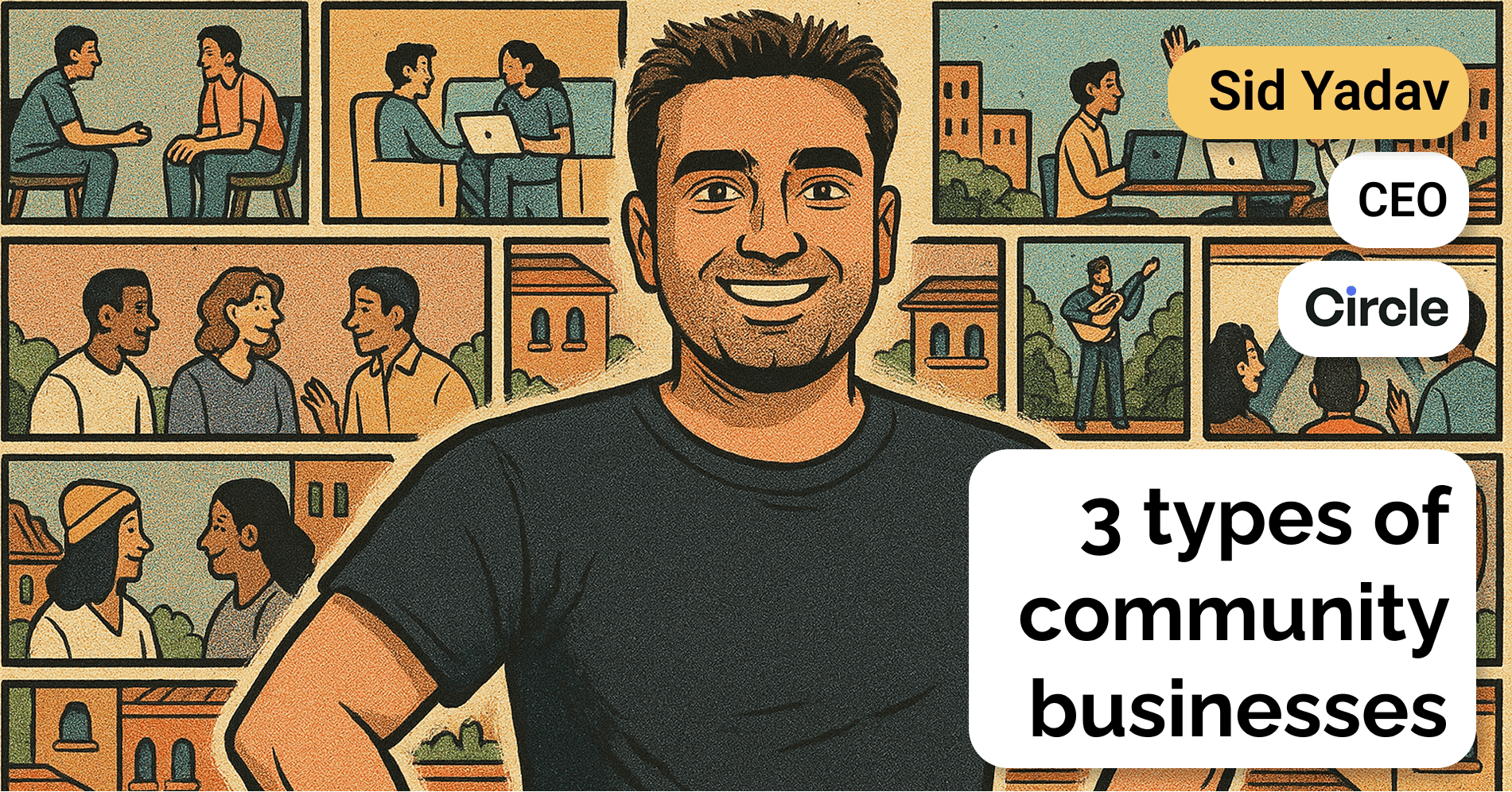Creator economy marketer and co-founder on building a sustainable business online
 Nan Wang
Nan Wang
Questions
- For aspiring beginner creators, what does it take for them to build an audience base and how long would it be until they start monetizing?
- In terms of the transition from a bigger platform like Twitter, Instagram, or YouTube to a more private direct email list, how smooth typically is the transition?
- The current creator economy lacks middle-class creators and some surprising stats include 1 - 2% of the creators make over $1 million a year, whereas the vast majority of them make below 15,000 a year. In your view, what would be the most important services companies can provide for creators to move up the income curve?
- 2020 was an outstanding year for the creator economy in terms of adoption and growth. Going forward, what do you think some of the challenges are in the future?
Interview
For aspiring beginner creators, what does it take for them to build an audience base and how long would it be until they start monetizing?
Guest: I think it depends on the individual creator. There are a few things that might make it easier for someone to monetize more quickly.
But in general, I think the way that people can start is by having a unique perspective on something. Once you have that unique perspective, that unlocks things like the ability to create content.
For example, for the newsletter creators, something that I see, typically people will start from their unique perspective on a certain industry or a trend. And they'll start by aggregating content around that industry. And that aggregation is oftentimes the first step. Before they'll do native content creation themselves.
Because there will be a few people who are getting value through that content being in a single place, and oftentimes that will turn into a word of mouth sharing at a small level.
That is a common pattern that will lead to organic growth.
And then from that, I would say there are several different ways that people can grow even quicker. One of the ways that you see happening most, I would say is people who have a large social media audience will often just be directing that audience to this new channel or this new content format that they're working on.
So the challenge there is, how do I get this engaged audience in one platform, perhaps Twitter, onto my newsletter.
For those people who already have large existing audiences. I would say it's easier for them to think about monetizing because they've already built up trust with people over time. What those people are paying for oftentimes is not just the individual pieces of content, but the promise that that person will continue to produce content. That promise is easier for one to make if they already have a longer-term standing relationship with people.
In terms of the transition from a bigger platform like Twitter, Instagram, or YouTube to a more private direct email list, how smooth typically is the transition?
Guest: I would say not smooth. And you're starting to see small tools come up to smooth that transition. Linktree is an example, probably the de facto tool right now that you'll see creators put in their profiles across channels as a way to connect visitors or audience to the rest of someone's content.
But that is pretty detached from the actual content one is creating. You're just hoping someone will click into your bio and be encouraged to do a bit of digging on their own.
In general, I would say one of the main tendencies you will see of content creators building their audiences is there is always just cross-promoting content from one platform to the other.
Getting people to move from one platform that they're already spending time on and getting them to leap to this next platform is something that creators perceive a lot of friction existing right now.
The current creator economy lacks middle-class creators and some surprising stats include 1 - 2% of the creators make over $1 million a year, whereas the vast majority of them make below 15,000 a year. In your view, what would be the most important services companies can provide for creators to move up the income curve?
Guest: The challenge some creators face is they're also working full-time jobs. In many of these cases, they create on the side. So their time is still the most limited resource. So what those people are looking for is the ability to monetize content that they've already created. And then they're trying to find ways to build their audience as quickly as possible with as little time as possible.
That is how they'll be able to get into the next upper classes through better monetization, through a bigger audience. In my view, one of the biggest gaps right now is the ability for content creators to take content that they've created in one format and remix it and republish it into a different format.
So an example of that would be the Joe Rogan podcast. His medium is the podcast, but he also has someone on his team who will cut up parts of his three-hour-long interviews into these 5 or 10-minute segments on YouTube, then distribute those segments on YouTube as a way to build the audience there.
It’s a time-consuming process for indie creators without a team to do. So one of the big gaps that I see is how do you get someone whose main content format is X and provide them tools that will help them to remix that content from form X into format Y and Z. Because that is how they can stretch their time and build an audience in this new channel that will lead to synergies of being able to direct multiple audiences to each other, as well as to these platforms that they're able to monetize more readily.
Yeah. So you're talking about the additional support. The creators do not quit their full-time job. They still do it on the side, but just to have this additional support from, I think it is. Yeah. So I think that, um, I think if they had the ability, to grow an audience at a faster rate or to monetize more readily, they would have the optionality to leave their full-time jobs.
But the biggest challenge right now, and the reality for them right now is while they're still working a full-time job, they just simply cannot compete in terms of content like production or content distribution. With these people who have already achieved this, like upper-class time to end creating status who can spend their full time and creative energy, uh, on doing what they're doing.
Through the emergence of substack and other things like that, it feels like, finally, it is a common thing for people to charge directly for their writing. That's not easy online before. So I think we're still, people are still figuring out. Exactly how they monetize that directly.
Then over time, we'll start to see, like, once people have a strong grasp of that, how they might go about following a playbook of, let's say a more established like media publication to, uh, to generate more revenue beyond just, um, just through the writing that they're delivering.
2020 was an outstanding year for the creator economy in terms of adoption and growth. Going forward, what do you think some of the challenges are in the future?
Guest: I think the largest challenge for creators will still be building an audience. At the end of the day, an initial audience leads to a bigger audience base in many cases, the more likely you'll be able to find a way to monetize that audience.
Even for a platform like Substack, the challenge is figuring out, how do we make newsletters written on our platform discoverable without doing it in an algorithmic way.
That's something that they're steering away from, which could potentially put even more burden on writers on that platform, figuring out how to grow their audience. So I still see the biggest challenge being, how do I grow the audience?
This initial platform that I've chosen, as my audience is growing on this one platform, what are these other platforms that I can look to that will have these reinforcing growth benefits, as I'm able to grow on them as well.
These indie creators are not able to do this as their full-time job. If the majority of their time is focused on content creation, it will continue to be a challenge for them to think about growing their audience, simply because they can't spend as much time making changes and running experiments, as they might be able to through just their content creation process alone.
There is a difference between audience versus community. One of the largest newsletters on substack right now is Lenny Rachitsky. I think he seems to have a really good understanding of the difference between audience and community.
I would say his audience is the people who receive his substack newsletters. I'd say one of the reasons that the audience is growing at the rate it is, is because he's invested in the community around it. The way that he's invested in the community is primarily through Twitter. When he creates one of his newsletters, he'll share tidbits about it on Twitter, which starts this loop of people seeing a forum, the content, getting interested in it, finding their way to the newsletter, and signing up for it.
This creates a buzz and word of mouth. And then on top of that, he's also created this Slack community, in which certain people from his audience will talk, share tips. It seems that too is building this nice, concentric growth loop.
His ability to use these communities to supercharge his audience is one that he seems to be doing better than anyone else in this space.
I'll be interested to see over the coming year if content creators can follow suit and not just think about building an audience, but also think about building the communities that will grow that audience as well.
So if you think about Slack, it's not just Lenny writing in that. It's the community members of Slack, like communicating with each other; and the same thing on Twitter, it's not just him tweeting at people, but it's people for responding to those tweets and then conversations coming off of that.
Disclaimers
This transcript is for information purposes only and does not constitute advice of any type or trade recommendation and should not form the basis of any investment decision. Sacra accepts no liability for the transcript or for any errors, omissions or inaccuracies in respect of it. The views of the experts expressed in the transcript are those of the experts and they are not endorsed by, nor do they represent the opinion of Sacra. Sacra reserves all copyright, intellectual property rights in the transcript. Any modification, copying, displaying, distributing, transmitting, publishing, licensing, creating derivative works from, or selling any transcript is strictly prohibited.




